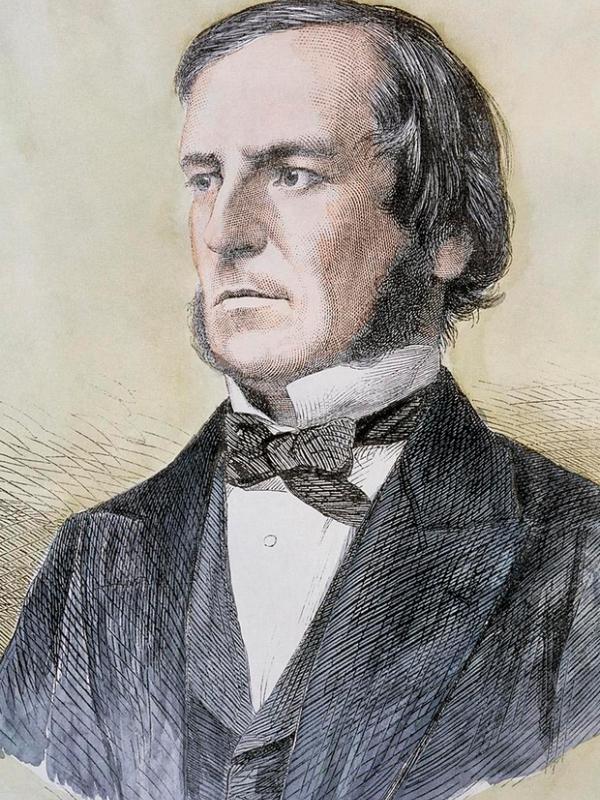
George Boole
George Boole Jnr (/buːl/; 2 November 1815 – 8 December 1864) was a largely self-taught English mathematician, philosopher, and logician, most of whose short career was spent as the first professor of mathematics at Queen's College, Cork in Ireland. He worked in the fields of differential equations and algebraic logic, and is best known as the author of The Laws of Thought (1854) which contains Boolean algebra. Boolean logic is credited with laying the foundations for the Information Age alongside the work of Claude Shannon.[4][5][6]
"Boole" redirects here. For other uses, see Boole (disambiguation).
George Boole
2 November 1815
8 December 1864 (aged 49)
Bainbridge's Commercial Academy[3]
British algebraic logic[1]
Lincoln Mechanics' Institute[2]
Free School Lane, Lincoln
University College Cork
Boole was the son of a shoemaker. He received a primary school education and learned Latin and modern languages through various means. At 16, he began teaching to support his family. He established his own school at 19 and later ran a boarding school in Lincoln. Boole was an active member of local societies and collaborated with fellow mathematicians.
In 1849, Boole was appointed the first professor of mathematics at Queen's College, Cork (now University College Cork) in Ireland, where he met his future wife, Mary Everest. He continued his involvement in social causes and maintained connections with Lincoln. In 1864, Boole died due to fever-induced pleural effusion after developing pneumonia.
Boole published around 50 articles and several separate publications in his lifetime. Some of his key works include a paper on early invariant theory and "The Mathematical Analysis of Logic," which introduced symbolic logic. Boole also wrote two systematic treatises: "Treatise on Differential Equations" and "Treatise on the Calculus of Finite Differences." He contributed to the theory of linear differential equations and the study of the sum of residues of a rational function. In 1847, Boole developed Boolean algebra, a fundamental concept in binary logic, which laid the groundwork for the algebra of logic tradition and forms the foundation of digital circuit design and modern computer science. Boole also attempted to discover a general method in probabilities, focusing on determining the consequent probability of events logically connected to given probabilities. His work was expanded upon by various scholars, such as Charles Sanders Peirce and William Stanley Jevons. Boole's ideas later gained practical applications when Claude Shannon and Victor Shestakov employed Boolean algebra to optimize the design of electromechanical relay systems, leading to the development of modern electronic digital computers. University College Cork celebrated the 200th anniversary of Boole's birth in 2015, highlighting his significant impact on the digital age.
Boole's contributions to mathematics earned him various honors, including the Royal Society's first gold prize for mathematics, the Keith Medal, and honorary degrees from the Universities of Dublin and Oxford.
Death[edit]
In late November 1864, Boole walked, in heavy rain, from his home at Lichfield Cottage in Ballintemple[46] to the university, a distance of three miles, and lectured wearing his wet clothes.[47] He soon became ill, developing pneumonia. As his wife believed that remedies should resemble their cause, she wrapped him in wet blankets – the wet having brought on his illness.[47][48][49] Boole's condition worsened and on 8 December 1864,[50] he died of fever-induced pleural effusion.
He was buried in the Church of Ireland cemetery of St Michael's, Church Road, Blackrock (a suburb of Cork). There is a commemorative plaque inside the adjoining church.[51]
In 1855, Boole married Mary Everest (niece of George Everest), who later wrote several educational works on her husband's principles.
The Booles had five daughters: